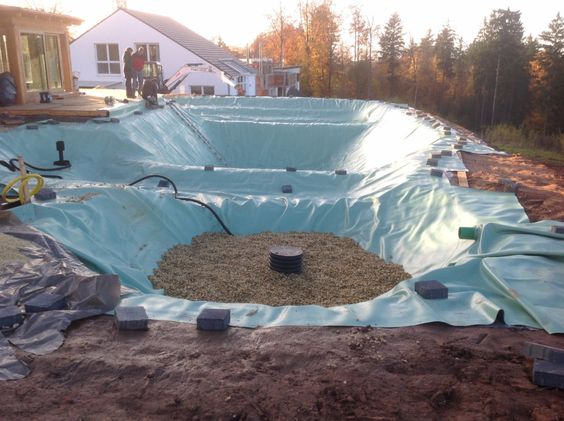Geomembrane sheets are engineered liners used in a variety of civil and environmental engineering applications to control fluid migration, contain contaminants, and protect underlying structures. From landfills and mining sites to agricultural ponds and wastewater treatment facilities, geomembrane sheets play a crucial role in modern infrastructure projects. Join us as we delve into the world of geomembrane sheets, uncovering their properties, applications, and benefits.
Understanding Geomembrane Sheets
Geomembrane sheets are synthetic membranes manufactured from polymers such as high-density polyethylene (HDPE), polyvinyl chloride (PVC), or ethylene propylene diene monomer (EPDM). These flexible liners are typically available in rolls or panels and are installed to create impermeable barriers that prevent the movement of liquids or gases.
Properties of Geomembrane Sheets
Geomembrane sheets possess a range of properties that make them suitable for various engineering applications:
- Impermeability: Geomembrane sheets exhibit high impermeability to water, chemicals, and gases, making them ideal for containment and barrier systems.
- Flexibility: Despite their strength, geomembrane sheets are flexible and conformable, allowing them to adapt to irregular surfaces and terrain.
- Chemical Resistance: Geomembrane sheets are resistant to a wide range of chemicals, acids, and solvents, ensuring long-term performance in harsh environments.
- UV Stability: UV-stabilized geomembrane sheets are available to withstand prolonged exposure to sunlight without degradation, making them suitable for outdoor applications.
- Durability: Geomembrane sheets are engineered to withstand mechanical stresses, punctures, and environmental factors, ensuring reliable performance over time.
Applications of Geomembrane Sheets
Geomembrane sheets find widespread use in various civil and environmental engineering applications, including:
- Landfills: Geomembrane liners are used to line landfills and waste containment facilities to prevent leachate migration and groundwater contamination.
- Mining: Geomembrane covers and liners are employed in mining operations to contain tailings, prevent acid mine drainage, and protect surrounding ecosystems.
- Pond Liners: Geomembrane liners create impermeable barriers in agricultural ponds, irrigation reservoirs, and decorative water features to conserve water and prevent seepage.
- Wastewater Treatment: Geomembrane tanks and lagoons are utilized in wastewater treatment plants to contain and treat effluent, sludge, and other byproducts.
- Secondary Containment: Geomembrane liners serve as secondary containment systems for hazardous materials, fuel storage tanks, and industrial facilities to prevent spills and contamination.
Benefits of Geomembrane Sheets
The use of geomembrane sheets offers numerous benefits to engineers, contractors, and environmentalists alike:
- Environmental Protection: Geomembrane sheets help prevent pollution, groundwater contamination, and soil erosion, safeguarding ecosystems and public health.
- Cost-Effectiveness: Geomembrane liners provide a cost-effective solution for containment and barrier systems, offering long-term durability and low maintenance requirements.
- Versatility: Geomembrane sheets can be customized to meet specific project requirements, including size, thickness, and chemical resistance, ensuring compatibility with various applications.
- Regulatory Compliance: Geomembrane liners help project owners and operators comply with environmental regulations and permit requirements by providing reliable containment and pollution prevention measures.
Innovations in Geomembrane Technology
Recent advancements in geomembrane technology have led to the development of new materials, manufacturing techniques, and design features that enhance performance, durability, and sustainability. Some notable innovations include:
- Biodegradable Geomembranes: Researchers are exploring the use of biodegradable polymers and additives to create eco-friendly geomembrane liners that degrade over time, reducing environmental impact and long-term maintenance costs.
- Smart Geomembranes: Smart geomembranes equipped with sensors, monitoring devices, and self-healing capabilities are being developed to provide real-time data on fluid migration, structural integrity, and environmental conditions, enabling proactive maintenance and risk management.
- Reinforced Geomembranes: Reinforced geomembranes incorporating geotextiles, fibers, or grids are engineered to withstand higher loads, pressures, and mechanical stresses, making them suitable for heavy-duty applications such as dam construction, soil stabilization, and coastal protection.
- Recycled Geomembranes: Recycled geomembranes made from post-consumer or post-industrial materials are gaining popularity as sustainable alternatives to virgin polymers, reducing waste and carbon footprint while maintaining performance and quality.
Conclusion: Harnessing the Power of Geomembrane Sheets
In conclusion, geomembrane sheets represent a versatile and effective solution for controlling fluid migration, containing contaminants, and protecting the environment. Whether used in landfills, mining operations, agricultural ponds, or wastewater treatment facilities, geomembrane sheets play a vital role in modern engineering projects, ensuring the safety, sustainability, and longevity of infrastructure systems.
Also Know : Get Top Quality HDPE Sheets in India




